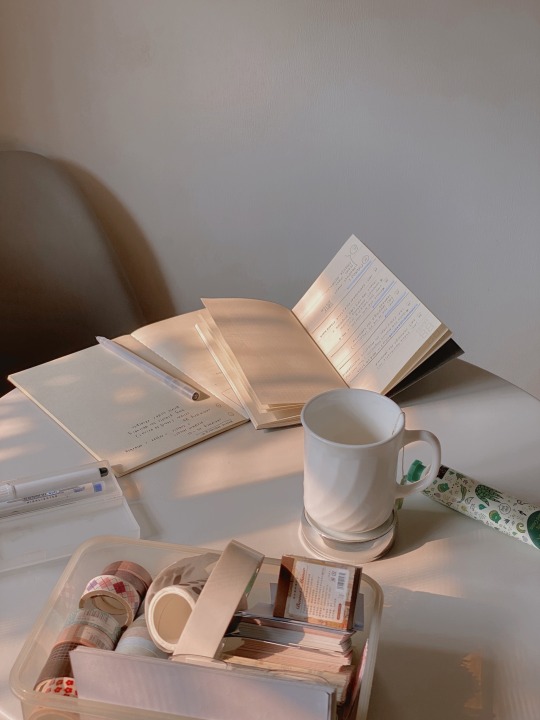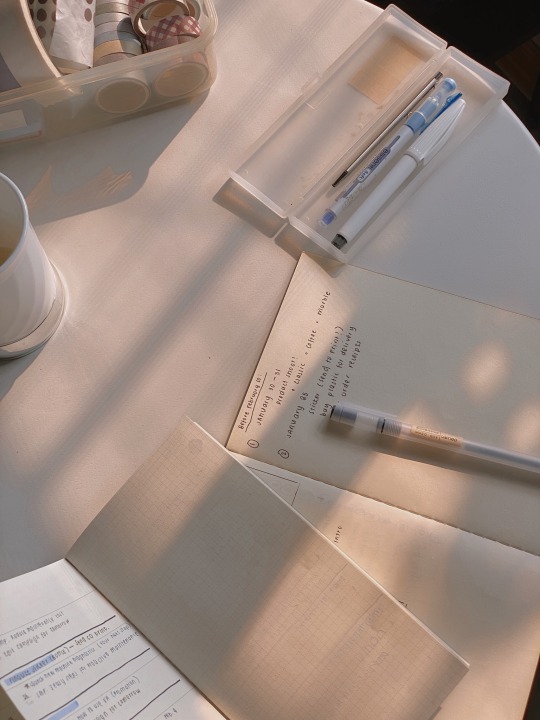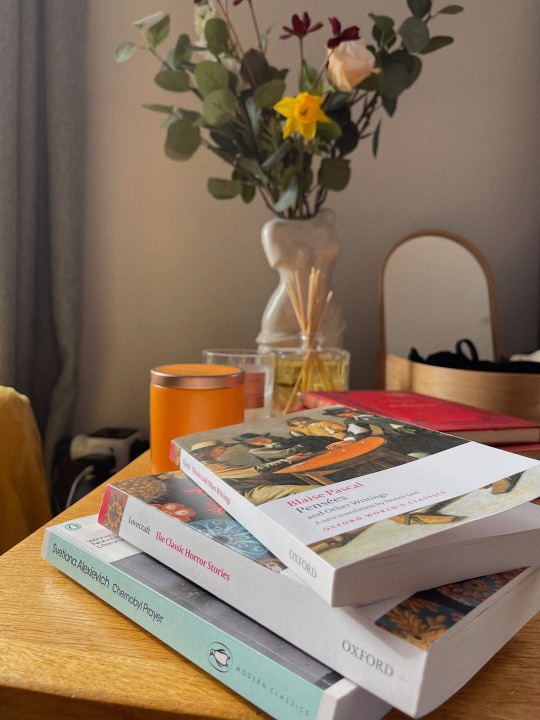Jordan, XX. The Netherlands. she/her || studying universitaire pabo at the university of amsterdam.
Don't wanna be here? Send us removal request.
Text
語彙 「ごい」 Vocabulary!~
人称代名詞 「にんしょうだいめいし」 Personal Pronouns in Japanese
In order to complement the first grammar lesson, and the rest to come, I want to introduce you to the personal pronouns that exist in Japanese. Their correct use is actually really important when having conversations, so it's better to learn their different nuances early in order to communicate properly!^^
First we have the "I", probably the most confusing one. These are some of the different and most common ways you can refer to yourself in Japanese:
私(わたし): it's the standard form for "I" and usually the one they teach you as it's also the most neutral one and the safest option in every conversation.
わたくし : it's the formal version of 私 and it's used in highly formal contexts such as politics or business. Beware of using it though, since you can seem arrogant or condescending in some cases.
僕(ぼく): more informal than 私 and it's use is reserved to men, mostly when they're young, or even women in some cases, but it's seen as a maculine word.
俺(おれ): same as 僕 , it's used also in informal settings but by "older" men.
あたし : informal "cute" form of 私 , usually used by girls/women
内(うち): it literally means "inside" in Japanese and it's an informal word for 私 that doesn't have any gender nuances.
こちら : it literally means "this way" and it's used in formal settings. It's kind of ambiguous as it can also be used to refer to "we" in some cases.
こっち : the informal form of こちら
我(われ): it's more common to use it for "we" (我々/我ら), instead of "I", and it's use can be complicated as it doesn't only mean "I" but also "one's self" (not necessarily refering to the speaker).
わし : corresponds to the shortened & informal form of 私 and it's usually used only by old men or really informal men.
Your own name: you can use your own name, in the third person, as a way to seem cute and/or childish even. I wouldn't recommend using this, but keep the meaning/nuance in mind in case someone talks to you like this.
Now that we know how to refer to ourselves, we can focus on the second person, "You", that can be as confusing and complicated as "I":
貴方(あなた): it's the one they teach you normally and the basic word for "you" in Japanese; however it's use is normally reserved to strangers that don't know each other's names yet. It can also be used by wives to address their husbands
あんた : it's the shortened & informal form of 貴方
君(きみ): it's meant to be used in order to address people "below you" in status (such as adults talking to children or teachers to students), so be careful if you don't want to seem condescending or rude to the other person. It's also used by couples to address each other.
お前(おまえ): only used between friends as it's use is seen as rude outside close-circles. It's considered a masculine word and also used by husbands to address their wives.
手前(てめえ): very rude way of addressing someone + it's commonly only used in anime/manga, not in real life
己(おのれ): just like 手前 , it's normally only used in media such as anime/manga to curse at others.
貴様(きさま): it used to be a respectful form (hence the use of 様/さま), but now it's considered to be very rude and disrespectful.
諸君(しょくん): formal/polite way of addressing a group of people. It can be translated to "ladies and gentlemen".
The person's name/surname: it's the most appropiate way to refer to another person, even more so than 貴方 , and the one I recommend the most. It's used in both formal or informal contexts by changing the honorifics that go after the name (ーさん/くん/ちゃん/様...)
Then, we have to add the third person, "he/she" to this list:
彼(かれ): Japanese equivalent of "he". Can also mean "boyfriend" depending on the context.
彼女(かのじょ): Japanese equivalent of "she". Can also mean "girlfriend" depending on the context.
こいつ/そいつ/あいつ : informal and very casual words used to refer to someone else and that translate to "this person/that person/the person over there", respectively.
Now, passing onto the plural pronouns, we have to note that there're various ways to make this form, usually by using suffixes:
ーたち : can translate to "and company" and it's added to other pronouns to make them plural (私→私たち/貴方→あなたたち/...). However it can also be used with other nouns that refer to living things (猫/ねこ "cat" →猫たち/ねこたち "cats")
皆(みんな) (ーさん): standard/neutral way to refer to a group of people in Japanese.
ーら : usually used only with the third person pronouns, such as 彼→彼ら/彼女→彼女ら
ーども : commonly used with the other third person pronouns (こいつども/そいつども/あいつども)
人々(ひとびと): this one is a noun, not a pronoun, but I wanted to add it as it literally means "people/the people" and can also be used to refer to humanity in general.
295 notes
·
View notes
Text
basic conjunctions & connectors
しかし: however
また: also
この後: after that
その時: at that time
場合は: if you, if this happens
例えば: for example
それから: then
だから: so
. ˚◞♡ ⃗ 📷 *ೃ༄: I'm not totally sure on the translation but pls correct me if I'm wrong, byee and have fun learning- fibbi
632 notes
·
View notes
Text
Websites for Japanese Learners
! click on website name to be redirected !
all websites can be used for free and without subscribtion (thats why japanese101 isnt included)
-> apps for japanese learners (soon)

1. JLPT Sensei
study guides (N5-N1)
includes grammar, kanji, vocabular, adjective, verb and other lists for orientation when studying
free JLPT practice tests
2. Japanese Verb Conjugator
automatic verb conjugator
verb database
kanji database & kanji tester
over 180,000 example sentences with sound
3. Tanoshii Japanese
japanese-english dictionary (with stroke order!)
pratice games & interactive lessons (Kanji Mahjong etc.)
learning resources (japanese novel, textbook, magazine, movie recommendations)
4. Jisho
fast and smart japanese-english dictionary
draw and radical function apart from keyboard search
searching by topic and categories by adding #[topic/category]
JLPT levels, sentences, particles, counters, names included
5. Map Quiz
world map quiz in japanese
divided into continents and north, east, south and west
6. Japanesetests4you
free JLPT N5-N1 reading and listening tests
free JLPT N5-N1 vocabulary, kanji and grammar lists + tests
7. Shiritori Online
Shiritori (しりとり) is a popular japanese word game and is ideal to exercise vocabulary for japanese learners. 2 or more players take turns saying a word that starts with the last kana of the previous word. The game ends when someone answers with a word ending with -n (ん) because there are no words starting with ん.
it is up to the players whether all forms of a hiragana (kana and its diacritics; は,ば and ぱ etc.) are allowed or not (e.g やぎ -> きよう).
example: りんご (apple) -> ごりら (ゴリラ) (gorilla) -> らーめん (ラーメン) (ramen). The last person who said ramen loses because the word ends with -n (ん). Instead the person could have saidらま (ラマ) (llama) (e.g).
2K notes
·
View notes
Photo
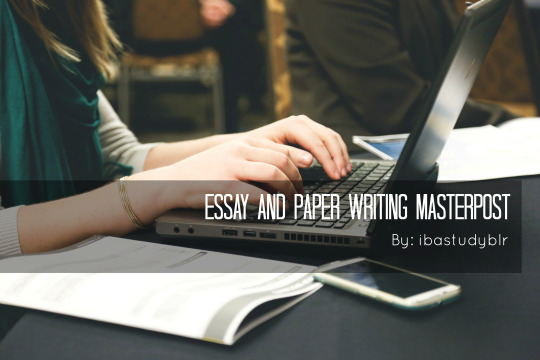
Working on an essay or a paper? Looking for feedback, help or editing support but have no idea where to turn for unbiased, constructive criticism and professional advice? Here are some great resources to help get you going!
General
Harvard’s Strategies for Essay Writing
Queen’s University Online Thesis Manager
How To Write A Great Essay About Anything
How to Write Dazzlingly Brilliant Essays: Sharp Advice for Ambitious Students
University of Cambridge - How to Write a Paper
Purdue OWL: Writing a Research Paper
Microsoft Research - How to write a great research paper
Georgetown University - How to Write a Research Paper
University of South California - Organizing Your Social Sciences Research Paper: Guide
Abstract Writing
Berkeley - HOW TO WRITE AN ABSTRACT: Tips and Samples
Purdue OWL - Writing Report Abstracts
University of Toronto - The Abstract
How to write a good abstract for a scientific paper or conference presentation
Introductions and Conclusions
Columbia University - Writing a Good Introduction
University of North Carolina at Chapel Hill - Introductions
Birmingham City University - Writing Introductions
University of Toronto - Introductions and Conclusions
Purdue OWL - Writing a Developed and Detailed Conclusion
Harvard - Ending the Essay: Conclusions
Editing
Paper Rater
Ginger’s Essay Checker
Hemingway Editor
ProWritingAid
editMinion
After the Deadline
Slick Write
Grammarly
GrammarBase
Citation
Citation Machine
BibMe
EasyBib
RefMe: APA
RefMe: MLA
Cite This For Me
University of South California - Citation Guide
11K notes
·
View notes
Text
Academic Writing Resources
General:
The Five-Paragraph Essay
Using Punctuation Marks
Deadly Sins Checklist
Formatting Your Paper
Writing About Literature
Basic Essay
Revision Checklist
Planning and Organization
Editing and Proofreading
Latin Terms
Essay Structure
Tips on Introducing Quotes
Academic Writing Tips
Introductions:
Introductory Paragraphs
Introductions
Writing an Introduction
Preparing to Write an Introduction
Introduction Strategies
The Introductory Paragraph
Writing Effective Introductions
In The Beginning
Introductions and Conclusions
The Introductory Paragraph
Writing Introductory Paragraphs
How to Write an Intro
Body Paragraphs:
Paragraph Development and Topic Sentences
Transitions
Transitions
Transitions
Four Components of an Effective Body Paragraph
Writing Paragraphs
Paragraph Development
Body Paragraphs
Body Paragraphs
Strong Body Paragraphs
Body Paragraphs
Writing Body Paragraphs
How to Write Body Paragraphs
Writing the Body
Writing Body Paragraphs
Body Paragraphs
Body Paragraphs that Defend a Thesis
How to Write Body Paragraphs
The Perfect Paragraph
Topic Sentences:
Topic Sentences
Writing Topic Sentences
Topic Sentences
Topic Sentences
The Topic Sentence
Paragraphs and Topic Sentences
The Topic Sentence
Topics, Main Ideas, and Topic Sentences
Writing a Good Topic Sentence
Good Topic Sentences
Conclusions:
Writing Effective Conclusions
Introductions and Conclusions
Conclusion Paragraphs
Conclusion Strategies
Conclusions
Tips for a Strong Conclusion
The Concluding Paragraph
Ending the Essay
Types of Conclusions
Writing a Strong Conclusion
How to Write a Conclusion
Writing Conclusions
Guide to Conclusions
Thesis Statements:
The Thesis Statement
Thesis Statements
Writing a Thesis Statement
Thesis Statement
Tips and Examples
Writing a Thesis
Writing the Thesis
How to Write Your Thesis
The Thesis
Thesis Statements
Guidelines for Writing a Thesis
Thesis Statements
Thesis
Thesis Statements
The Thesis
Create a Strong Thesis
How to Write a Thesis
Developing a Thesis
Guide to Writing Thesis Statements
Thesis Statements
Citing:
When to Cite
APA Documentation
MLA Documentation
Suggestions for Citing Sources
Research and Citation Resources
Citation Information
MLA Guidelines for Citing Poetry
MLA Style for Poetry
How to Format Your Paper
Argumentative Essays:
Argumentative Essays
Argument
Argumentative Essays
Persuasive or Argumentative Essays
Argumentative Essay
Argument/Argumentative
Argumentative Essays
How to Write a Good Argument
How to Write an Argumentative Essay
Writing Conclusions to Argumentative Essays
Argumentative Essay
Persuasive Essay Writing
Writing Concluding Paragraphs
Constructing the Argumentative Essay
Writing About Poetry:
Writing About Poetry
Writing About Poetry
Writing About Poetry Q & A
Poetry Explications
Writing About Poetry
Writing About Poems
Explicating a Poem
Writing About Poetry
Writing a Thesis Paper About a Poem
How to Start a Poetry Introduction
Poetry Essay Structure
Poetry Explication
Expository Essays:
Structure of a General Expository Essay
Expository Essay Examples
Sample Expository Essay
Expository Writing
Expository Essay Model
Elements of Expository Essays
Expository Writing Information
Expository Essays
Writing Expository Essays
How to Write an Expository Essay
Tips on Writing an Expository Essay
Expository Essays
Essay Map
Writing Expository Essays
How to Create a Strong Expository Essay
Expository Essay Writing
The Expository Essay
Research Papers:
How to Write a Research Paper in Literature
Writing a Research Paper
The Research Paper
How to Write a Research Paper
Five Paragraph Research Paper
Sample Research Paper
Writing a Research Paper
Tips for a Research Paper
How to Write a Research Paper
Writing a Scientific Research Paper
Writing Research Papers
Research and Writing
Research Papers that Rock
How to Write an Effective Research Paper
College Application Essays:
Application Essay Tips
Application Essays
Tips
10 Tips
Application Essays
How to Write a College Application Essay
Tips for an Effective Essay
Do’s and Don’t’s
College Application Essay
How to Write a College Application Essay
Narrative Essays:
Narrative and Descriptive
Narrative Essay Writing
The Personal Essay
Narrative Essays
Narrative Essays
Writing Narrative Essays
Narrative/Descriptive
Narrative Essay
Writing a Narrative Essay
Tips on Writing a Narrative Essay
96K notes
·
View notes
Photo

Hey guys! Since it’s close to end of the fall semester, and I have to write two papers by the end of the month, I decided to share my tips for writing research papers. This is all based on my own experiences, so if some tips are not what you would do when writing your own paper, that is perfectly okay. This is just what I’ve done from past experience and it works for me, so maybe it can work for you too!
1. Start research two weeks to a month in advance.
I always gather my resources about a month before the. With other homework that will eventually be due and my terrible habit of procrastination, I’ve found it’s easier to gather what you need for your paper ahead of time. It’s better to plan ahead than to feel frustrated with little time left. If you give yourself the space to concentrate and find what you need, it will help you write your paper and relax later.
2. Open a document on your computer for the paper in advance and set up the basic format (MLA, APA, Chicago, etc…).
I find it’s easier to get into the paper when I’ve already done the structuring ahead of time. That means creating the header, adding the sources I’ve cited, and all the decoration. When you’ve gathered your research, you want to jot down some ideas for the paper, or you find something that sparks your motivation to write a few sentences, it’s better to build the skeleton of the paper before than during.
3. Create a rough outline of your paper, and add to it later.
This outline does not need to be perfect. I am talking as bare as bones can be. That is what your outline should look like. If you want to throw in a few ideas you have for the structure, go ahead! This is just the first brain dump. What you put in your outline should be what you want to dig deeper into later when you’re skimming the research you’ve found.
3. Print out your sources and annotate them.
You may not have a printer at home, but you should definitely print out your resources and annotate. Sometimes, PDF applications can quit or stop working, so I’ve come to realize going in with a highlighter and a pen is the best way to go. Personally, I go into the print settings and put two pages on the front and back side of a single sheet to save space and ink.
4. Make a highlight and/or annotation key.
This is important if you made your outline. The categories and ideas you’ve come up with for your topic should be what you’re searching for and annotating in your sources. Making a key of what should be highlighted for a specific idea in your paper helps to save time when making your paragraphs. It helps me from having to skim my highlights to see which sentences belong to which ideas.
5. Combine information from your annotations and highlights according to your outline.
You can combine the information in any format you choose, as long as it’s organized in the way that makes it easer for you to write the paper. If you want to organize by paragraph or by source, do that. Taking notes while you’re skimming your sources can help too! I open a different document and put in my own words the research I’ve found, according to the outlined topics, ideas, or categories.
6. Know you can do it.
Research papers can give anyone anxiety, and it is very stressful when you wanna write to the best of your ability. The late nights of trying to fill your teacher’s requirements and the worry you won’t get that good grade will always be there. But believe me when I say, if you put effort into your product and have faith in yourself and what you’re producing, it will show. So don’t worry too much! You got this, and you’re going to write a kickass paper.
And there you go! I hope the tips I gave help you with your research paper, and I know you’ll do great regardless of what you might be thinking. Go and write that paper!
My other posts (mostly quotes)!
I used an icon from FlatIcon for my header. Go check it out!
4K notes
·
View notes
Text
How to Write a University-level Essay
Heyo, so school is fast approaching, and seeing as Tumblr is made up of a lot of younger users who will soon be shipping off to college or university soon, I thought I would take it upon myself to help spread my knowledge of essay-writing. Essay-writing is my thing. I love it. I live for it. It’s how I make up for my shitty test marks, and still get by with an 85 average+ in University classes. I’m a historian by trade, so perhaps this information will seem a bit off from what you’re used to, but hopefully, It’ll help you out. If you have any questions, feel free to shoot me an ask.
1. Consider your question and find your thesis.
I know, I know. People always say, no! Never start with your thesis/intro paragraph! Go to the body!! Well i’m here to say forget everything you’ve been told. Forget that, forget the stupid hamburger shit they teach you, forget it all and start reading.
I ALWAYS start with my thesis. Why? Because you cannot make good paragraphs without knowing what you’re researching. You need direction, and a thesis is your map.
So, the question we’ll use shall be: What is one way in which the Union won the American Civil War?
Now remember, your thesis is your map. It shows you where to go, what to look for. The thesis is the heart and soul of all your work. You want a good, solid thesis. What does that include, you ask?
An idea
A reason for said idea
Evidence to support said reason, and thus validate the idea.
So, lets do an example. Let’s say I’m writing on the use of media during the American Civil War. I like photography, and wrote a paper on this in my second year, but im gonna be doing this example freehand(idk where I put that essay lol) so lets work with how I got an A+ on that paper. This will be my idea:
“Photography during the American Civil War influenced the war’s outcome in the Norths favour.”
This is VERY vague. This is an example of a thesis in bloom! Let’s take it further. Look at the above. What questions would you have from this thesis?
-Who was taking photos at that time?
-Why did it influence the outcome?
-How did it influence the outcome?
-Who consumed photography as a media at that time?
This is where you STOP, and start the next step.
2. Research
Start your basic research with your idea, and the above questions in mind. Look at libraries, ask your professor or TA or librarian, or just do some basic google searches to get to know the subject(but for the love of god if you include a google link in your citation I will personally hunt you down and castrate you.)
I like to start with the basics of any inquiry: WHO, WHAT, WHERE, WHEN, WHY, HOW. Who was taking photos? Where were they displayed that caused influence? ect…These, in relation to your beginner thesis, will help guide you in what form your thesis will take.
Once you’ve finished that, and have a general feel for the time period, go back to your thesis.
3. THESIS 2.0
Go back to your original question: What is one way in which the Union won the American Civil War? Now look at your thesis again. It’s too vague, isn’t it?
As you can see, our original thesis was too vague to be a real thesis. So, we NARROW IT DOWN using our WWWWWH progress we focused on during early research!
“Photography during the American Civil war influenced the war’s outcome by providing a visual for ordinary citizens about the horrors of war, and thus helping to increase donations and awareness to the cause.”
Great! But once again, too vague! Questions that may arise include:
Who was taking the photos
Evidence for donations?
Evidence for social awareness?
So, we NARROW IT DOWN again. I’m going to use Andrew Gardner’s photography during the Civil war, as he was one of the most famous and influential at the time.
“Andrew Gardner’s photography during the American Civil war influenced the war’s outcome by providing a visual for ordinary citizens about the horrors of war, and thus helping to increase donations and enlistment in the Union through awareness to the cause…”
The above then gives us the following(why and how are sometimes grouped together):
Who: Andrew Gardner
What: Photography helped the north win the war.
Where: Union-aka northern states
When: American Civil War
Why/How: Because Andrew Gardner’s photography raised social awareness through this new and budding medium
Use this sort of outline to guide you in the next step!
4. Now that we have a thesis, you need to do some more research and evidence gathering.
The way I like to do this is to go check out a few books from the library(look for text books in particular), and leaf through the index for matching terms. Our matching terms would be:
Photography, civil war, Andrew Gardner, media
From there, you read over the pages, and see if any of the info relates to your subjects. Copy down quotes, page numbers, book title, author, publishing date and publisher. You need these for your bibliography. Pick and choose relevant information. The filter for relevant information relies entirely on your thesis, because it decides what you need to be looking for—this is why I hate when people tell me to start writing paragraphs before I write a thesis! It’s simply impossible and counter productive, and will cost you hours in revision.
So, gather your information from the library, and cross-reference with peer-reviewed articles and data. For our thesis, we would need data on enlistment numbers in an area after a date of Andrew Gardner’s photography exhibit showcases. No matter what type of essay you’re writing, you can always back up your evidence with data, and it won’t hurt one bit. Don’t be afraid of the numbers, kids!
So, if we were to go back to our thesis, we could now expand on it like this:
“Andrew Gardner’s photography during the American Civil war influenced the war’s outcome by providing a visual for ordinary citizens about the horrors of war, and thus helping to increase donations and enlistment in the Union through awareness to the cause. An increase in donations and enlistment in relation to exposure to Gardners work is seen in data/evidence point A, as well as in data/evidence point B, which will be fully outlined in the points below.”
This gives you an example of how to lead from a thesis, to your opening paragraph.
5. Data and Evidence Justifications–Paragraph making
This is the section where you can branch your essay into your data and evidence points you gathered in steps 2 and 4. You can have as many paragraphs as you like, just make sure your evidence and data is strong and supported. I personally like to work with my thesis copied and pasted onto the top of every page I write on. This keeps you on track, with your clear goal in mind, and will help you from straying. I will give you an example of how a paragraph might sound.
Andrew Gardner’s photography during the American Civil War became heavily influential upon the American population at the time, particularly the north, wherein which his work was showcased. The influence of Gardner’s photographic works is seen in the _____, which shows us that without the influence of Gardner’s media influence, war efforts and awareness may not have been as successful as they had been.
This is an alright opener for you to work with. The ___ is where you could put in your data point or evidence piece. The point of the paragraph is to show your support for your thesis by confirming it with evidence.
Your paragraphs should take this form:
Present, Confirm, Conclude, Lead.
You present your evidence, confirm its relation to the thesis and confirm the validity of the thesis, conclude by brief revision of evidence, and then lead into your next paragraph.
6. Conclusion
Your conclusionary paragraph should be a look-over of the above paragraphs. Restate your thesis, present a summarized version of your paragraphs(one or two sentences only), and perhaps take the time to look at your own views on the subject. An example might look like this:
“Taking a moment to step away from the above mentioned evidence, I believe it to be scholarly acceptable and even necessary to state my own views on the subject presented. In drawing conclusions, I felt that the above information was correct in that it presented a reality of the time period, in which photography was becoming a medium to be embraced by popular society. People were not only astounded by Gardner’s photographs on a social level, but also a technical level. The astonishment people held at seeing the war-torn battle fields spurred them into action, and even today can still present feelings of dread, fear and loss when looking at his photos…blah blah blah”
Why is it scholarly acceptable and perhaps necessary to state your views? Oftentimes, it is to reassure the reader of your own personal bias’, which exist whether you like them or not, to the subject at hand. Having a small tidbit on your own thoughts about your research ect, breaking away from the third-person droning of an essay can be refreshing and welcoming for a prof at the end of his stack of essay reading.
7. In summary
Thesis
WWWWWH
NARROW IT DOWN
Data and Evidence
Present, Confirm, Conclude, Lead
Self opinions/Conclude
All in all, do unique things. Professors love it when they come across something that’s not cookie cutter! Even if they present you with a list of essay topics, take the leap and ask them if you can do your own research topic!! Take risks with your essay writing, talk to your professors about what you want to do, and try to have fun with your research. I’ve written on everything from civil war photography to Disney princesses in american media, to the religious formation of idea of heaven and earth. Remember, so long as there’s credible, documented evidence, it’s possible to write about it.
56K notes
·
View notes
Text
“i don’t like writing about my day, but i want to keep a journal”:
quotes and copywork. when reading, if you find something you enjoy, just copy it into the notebook. you can copy a whole chapter if you wish, highlighting what caught your attention the most.
definitions. look up on a dictionary and copy it. you could write your own dictionary as well, making up definitions for words.
lists. a classic, write movies to watch, books to read, the playlist of the month or just the groceries you have to buy.
maps. when going somewhere, you could draw the route you took or just a map of the place itself. just look up the place on google maps and copy it. you can draw a little map of all the places you have lived or the schools you have attended as well.
photos
take “notes” as you watch movies / documentaries. write down phrases that caught your attention or doodle.
illustrations and clippings. if you see an image or piece of art that you liked, put it in your journal. if it’s from a book or from a magazine I would recommend scanning it, tho’. it will serve as a record of what kind of art you enjoy through the years.
newspaper clippings from the day.
tickets and pamphlets. from movies, museums, transportation.
postcards
records. you could record for a month what the temperature was when you woke up and when you went to sleep. if you do that for a year, it gives you a better notion of the passing of seasons. you could record rainfall and other seasonal changes as well. you could choose something (an animal, a plant, an item or object) and write down every time you see it.
rubbings of leaves, coins, landmarks.
count. there’s a scene in the movie Coraline (2009) where Coraline’s dad tells her to go count the windows. you could do the same type of counting game if you are bored and write down.
mindmaps/sketchnotes + timelines of books, movies, music albums.
collages
pressed leafs and flowers
your collections. if you collect anything you could write down an inventory or maybe try to draw the items.
recipes. write down recipes and give it a score every time you try it. you could do the same for drinks you try out.
stickers
comic strips. you can find a bunch of it online, glue your favorites in your notebook.
51K notes
·
View notes
Text


26/2/21 | 55/103 Days of Productivity
Just got the official word that graduation has been cancelled but we've been given the option to come back next year and graduate with the class of 2022. Would mean I get to graduate with my boyfriend when he finishes hisasyers degree and then also graduate from my master's degree later on that year.
708 notes
·
View notes
Text


got drenched on my way to the uni library so i changed into some freshly washed sweats, got some tea, put on my “bloodsworn death” playlist and am doing course work for the rest of the evening
4K notes
·
View notes
Text
self-care for quarantine 2021







Hi, it’s werelivingarts! My school was shut down once last year, and I recognize that both of mental and physical health got much worse (staying up over midnight and eating so much unhealthy food). I took me almost a semester back in face-to-face school to cope with normal flow again. ☺️
Now my country is having another school shut down, I’m going back to virtual learning and I’m determined to be better than last year (yes, it’s the second year of COVID-19 now). Above is a list of things I want to remind myself in quarantine, and I want to share it with you all too!
Stay safe and healthy, wear mask and sanitize your hands frequently! ❤️💙💜
3K notes
·
View notes
Text


031021. sunny day adventures—winter quarter's finally wrapping up
3K notes
·
View notes
Text

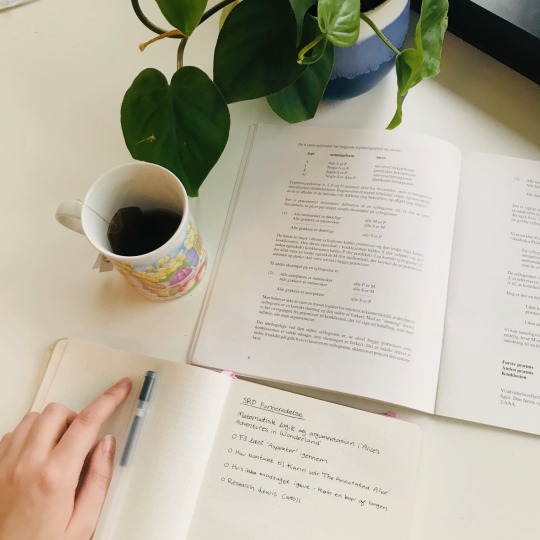
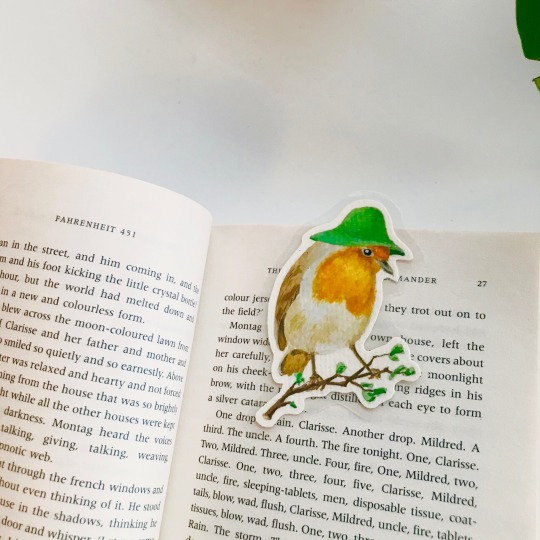
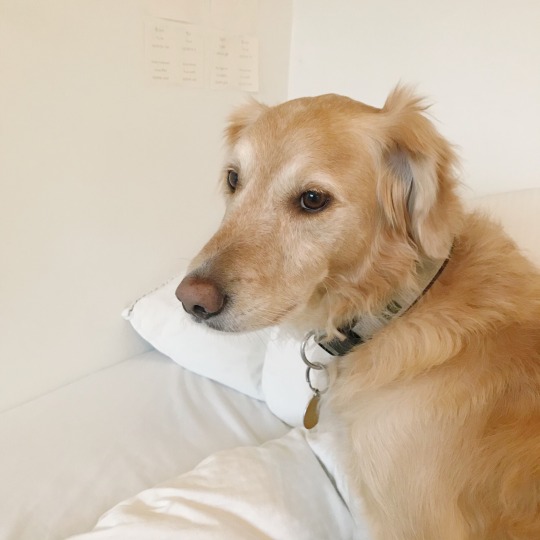
17.12.2020
And I’m back! Sorry for being mia, but life happens, I guess. So... Denmark is in lockdown again over Christmas so for the entirety of December I’ve been having virtual classes, which sucks just as much as I remembered, but rather that then get corona. We have slowly but surely started to get ready for our SRP, which is the biggest assignment you have to Wright in high school in Denmark! I’m writing about mathematical logic and argumentation in Alice’s Adventures in Wonderland, so if anyone has any references to that, sont be scared to hit me up hahah. I’m reading Fahrenheit 451 for my materclass, and my sister has made me the cutest bookmark :’). Other wise I have been spending my quarantine knitting sweaters for my self and everyone else basically, and I’ve been chilling with this fella. (I asked him nicely for a photo and he pulled this pose. A goddamn model if you ask me)
I hope that everyone of you are staying safe during these hard times, and that you are getting some joy out of the holiday season 🥰
🎧 - Here (for Christmas) (Lukas Graham)
390 notes
·
View notes

